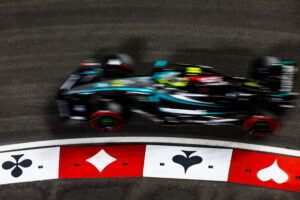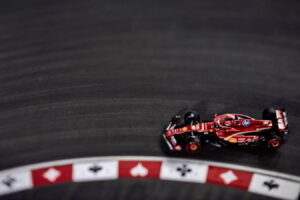Last November, the feeling leaving Phoenix Raceway was disgruntlement and dread.
It was a terrible race brought on by a controversial package. The idea that we swapped Homestead-Miami Speedway for that made me want to break open the liquor cabinet.
After Sunday at Phoenix, I cannot wait for the championship weekend in November.
Thanks to a much needed change to a low downforce package for the short tracks in the offseason, we got a race that produced some real, great racing.
Instead of the artificiality of the high downforce package with drivers holding the gas pedal down all lap and nobody losing control, drivers at Phoenix couldn’t hold the gas down. They got loose and brushed the wall. They could pull up to the leader without mashing the gas pedal.
It was competitive up front as well, with 20 lead changes among seven different drivers. For context, there were 17 lead changes among six different drivers last spring and eight lead changes among five different drivers last November.
You had the comers and goers, even up front.
Chase Elliott led a race high of 92 laps and was easily the strongest car of the race, before a loose wheel forced him to make an unscheduled stop on Lap 157.
Brad Keselowski gambled late on track position overpowering new tires, like last November played out.
Spoiler alert. It didn’t.
We had the bumping and banging, and even wrecks, that are a hallmark of short track racing.
The intensity ramps up on restarts. pic.twitter.com/XMkyuMiX8v
— FOX: NASCAR (@NASCARONFOX) March 8, 2020
In a perfect world, low downforce would be the direction NASCAR would head in for all tracks. Then again, in a perfect world, Yona of the Dawn wouldn’t have ended when the story wasn’t finished.
Perhaps, though, if we get these kind of races with all the short tracks (and road courses) this season, the big wigs in Daytona might reverse course on high downforce and institute low downforce across the board.
But being a pessimistic person, I won’t hold my breath.
That’s my view, for what it’s worth.






